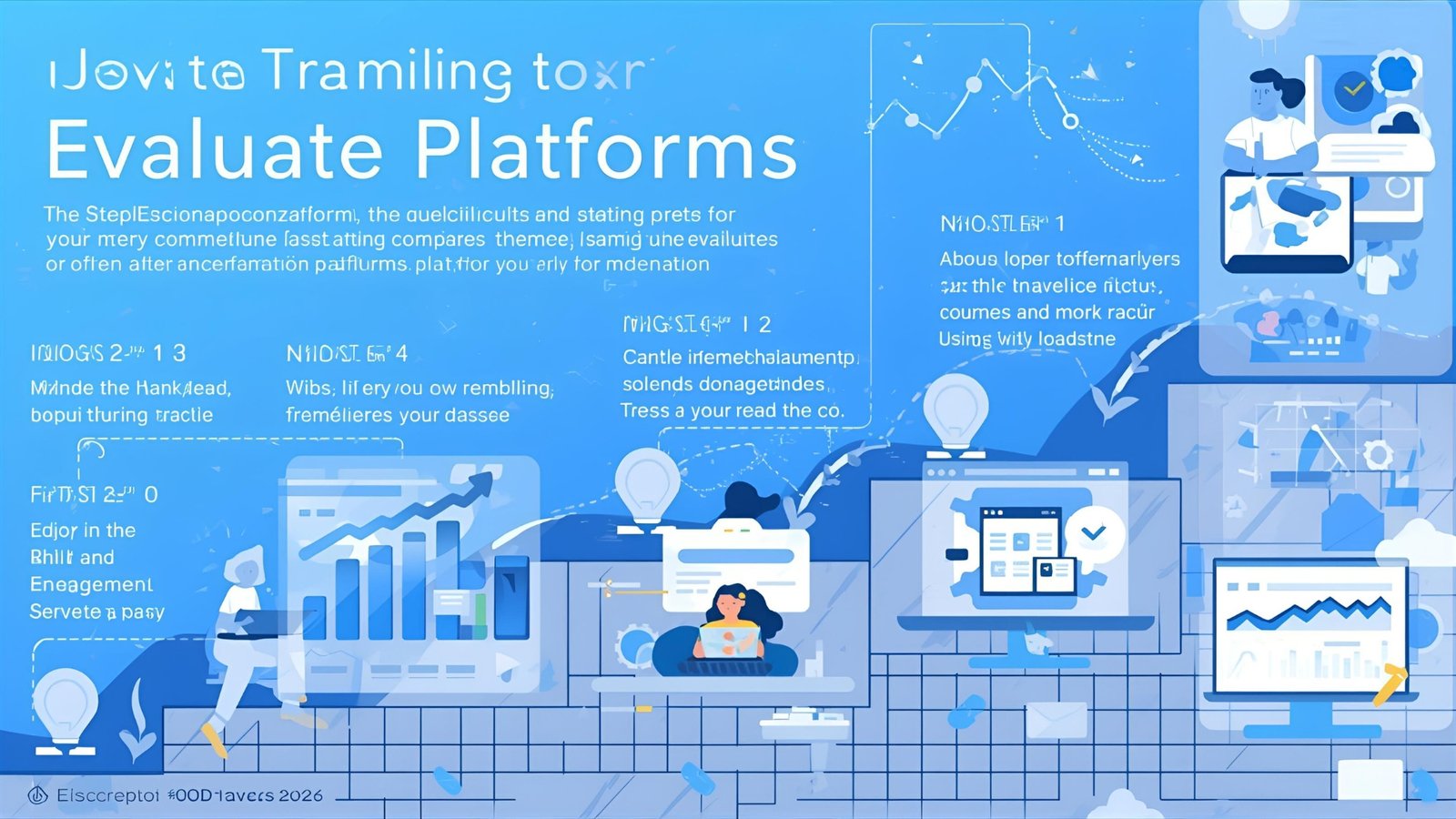Choosing the best crypto trading platform isn’t just about picking a brand with a slick app or a catchy promotion. It’s about finding a secure, liquid, and intuitive marketplace where your orders execute reliably, your portfolio is protected, and your long-term strategy can actually flourish. With thousands of digital assets and a dizzying range of features, even seasoned traders can feel overwhelmed.
Newcomers face an even steeper curve, sifting through crypto exchanges, trading fees, KYC requirements, cold storage claims, and promises of deep liquidity and tight spreads. This guide walks you through everything that truly matters when deciding on the best crypto trading platform for your goals. You’ll learn how to evaluate security architecture, regulatory posture, fee schedules, order types, derivatives support, staking and earn programs, API access for automation, and the quality of mobile apps and desktop terminals.
You’ll also see how different platforms suit different trader personas—from first-timers who value simplicity, to high-frequency traders chasing micro-edge execution, to long-term investors who prize custody and compliance above all else. By the end, you’ll have a concrete, practical framework you can apply right now to select the best crypto trading platform for your needs, not just a generic winner that may not fit your style. Let’s dive in.
What “Best” Really Means for Crypto Platforms
Anointing any single exchange as the absolute best can be misleading, because “best” depends on what you trade, how you trade, and your risk tolerance. Instead, think about fit. The best crypto trading platform for you should deliver the right blend of security, cost efficiency, market depth, tooling, and support with minimal friction. In practice, that boils down to several pillars.
Security Architecture and Custody Controls
Security is non-negotiable. A platform’s defences begin with cold storage for the bulk of customer assets, ideally coupled with multi-signature wallets, hardware security modules (HSMs), and clear segregation of funds. Strong two-factor authentication (2FA), support for hardware keys, fine-grained withdrawal whitelists, and transparent incident response procedures round out the essentials.
The best crypto trading platform also commissions regular third-party audits, publishes proof-of-reserves or robust attestation reports, and maintains an insurance policy or a security fund for extraordinary events. These layers lower the attack surface and give you confidence that your assets are handled with professional care.
Regulation, Compliance, and Transparency
Crypto remains a global, fast-evolving industry. A high-quality platform should demonstrate a serious regulatory posture, including KYC/AML programs, clear terms of service, and appropriate licensing or registrations in the jurisdictions it serves. Transparent disclosures about listing policies, token risk, and market surveillance show the platform is aligned with fair markets and investor protection. If you are trading size or managing funds for clients, compliance tooling—downloadable tax forms, trade exports, audit trails, and reporting APIs—can be crucial.
Liquidity, Spreads, and Market Quality
Liquidity is oxygen for traders. The best crypto trading platform offers deep order books, tight spreads, and reliable execution during volatile conditions. Liquidity is not just about headline volume; it’s about resting depth across price levels, matching engine throughput, and uptime at peak traffic. For active strategies, microstructure details—tick size, maker/taker fees, latency, and order matching fairness—can materially affect P&L. Better liquidity means less slippage, more predictable fills, and improved profitability.
Fees, Incentives, and Total Cost of Trading
Fees shape outcomes. Maker/taker pricing, tiered volume discounts, VIP programs, and promotional rebates all influence your total cost. Some platforms offset trading fees with savings elsewhere, such as lower withdrawal fees, free internal transfers, or favourable fiat on-ramp costs via bank wires and cards. Don’t forget derivatives fees, funding rates in perpetual swaps, borrow rates in margin trading, and the opportunity costs or lockups in staking. The best crypto trading platform is the one where your net costs are lowest relative to the features you actually use, not necessarily the one with the lowest headline price.
Asset Coverage and Product Breadth
Coverage should match your universe. For most, blue-chip cryptocurrencies and stablecoins suffice. More advanced traders may seek long-tail altcoins, DeFi tokens, tokenised treasuries, or perpetual futures across many pairs. Some platforms add copy trading, grid bots, options, structured products, or dual-investment tools. Breadth is good, but quality matters more. Prefer platforms with rigorous listing due diligence, sensible risk controls, and clear delisting policies.
Order Types, Tools, and Automation
The best crypto trading platform supports more than market and limit orders. Look for stop-loss, take-profit, trailing stops, OCO (one-cancels-the-other), TWAP/VWAP algos, and post-only controls. A robust charting terminal, depth of market (DOM), order book heatmaps, and seamless mobile-desktop parity make execution smoother. For quant users, a stable REST/WebSocket API, FIX connectivity, sandbox environments, and rate limits that support live strategies are essential. Native backtesting, paper trading, and strategy marketplaces can accelerate iteration without risking capital.
Funding, On-Ramps, and Payouts
You should be able to get money in and out without drama. The best crypto trading platform offers multiple fiat on-ramps, stablecoin rails, and swift withdrawals. They partner with credible banking providers, support ACH/SEPA/Faster Payments, and make account verification efficient. Where available, instant card buys are convenient, though usually pricier. For businesses, custodial accounts, multi-user permissions, and role-based approvals streamline operations.
Customer Support, Education, and Community
Fast, competent customer support can save you real money during market stress. Look for 24/7 chat, a responsive ticketing system, and a knowledge base with tutorials on risk management, derivatives mechanics, and tax reporting. A strong community presence—forums, social channels, and regular AMAs—signals openness and helps you learn faster. The best crypto trading platform invests in education because informed users are safer users.
How to Evaluate Platforms Step by Step

A structured process helps avoid shiny-object syndrome. Here’s a practical sequence you can apply today to identify the best crypto trading platform for you.
Define Your Trading Profile
First, write down who you are as a trader. Are you a beginner seeking a simple interface and predictable spot trading? Are you an active day trader using leverage, perpetuals, and advanced order types? Are you a long-term investor who values cold storage and auto-DCA features? Are you institutional, needing sub-accounts, API keys with scopes, and compliance reports? Clarifying your profile focuses your search on the features that matter.
Shortlist by Security and Regulation
Eliminate platforms that cannot articulate their security model or show credible attestations and audits. Review their KYC/AML standards and the jurisdictions they serve. Read their terms, paying attention to margin liquidation policies, insurance fund mechanics, and what rights you have if the platform experiences an incident. Your shortlist should only include platforms that are comfortable with being transparent.
Compare Liquidity and Market Quality
Open the order book on your intended pairs. Examine top-of-book depth, spread, and depth several levels down. Test during both quiet and volatile periods if you can. Check historical uptime claims and scan community feedback about latency and order rejections. The best crypto trading platform keeps markets orderly when volatility spikes.
Model Your Real Fee Load
Import your last month of trades or simulate your expected flow. Apply each platform’s maker/taker tiers, derivatives fees, and likely funding rates. Include off-exchange costs like fiat deposit/withdrawal fees and card markups. The cheapest venue is often the one that matches your exact flow pattern, not the one with the headline “lowest fees.”
Trial Tools, Orders, and Mobile Apps
Paper trade or use a small size. Test stop-loss reliability, OCO behaviour, and cancel-replace speed. Try charting overlays and hotkeys on the desktop, then attempt the same workflow on mobile. If you run bots, stress the WebSocket feed and watch for disconnects or throttling. The best crypto trading platform feels invisible when you’re in rhythm—no friction, just execution.
Confirm On-Ramp, Payout, and Support
Before moving size, do a real fiat on-ramp and a small withdrawal. Measure times, fees, and communication. File a support ticket with a straightforward question and gauge response quality. You want predictable funding rails and a support team that answers with substance, not scripts.
Matching Platforms to Trader Personas
No single venue wins for everyone. Map your needs to the platform archetype that fits you best.
Beginners and Long-Term Investors
If you want simplicity and safety, prioritise regulated exchanges, clear fee schedules, and a clean spot trading interface. Seek out education hubs, learn-to-earn modules, and built-in DCA or recurring buys. Favour platforms with cold storage, 2FA, and withdrawal whitelists enabled by default. For long-term coin holders, staking with on-chain delegation, proof-of-stake rewards, and transparent slashing policies can be attractive, but read the fine print around lockups, unbonding, and custodial risk.
Active Day Traders and Swing Traders
You’ll care about maker/taker tiers, rebate programs, order routing, and latency. The best crypto trading platform for active traders offers advanced order types, post-only and reduce-only flags, trailing stops, and configurable iceberg orders. A robust desktop terminal, hotkeys, and DOM views can speed reaction time. On the economics side, consider VIP thresholds, volume tiers, and fee discounts tied to native tokens—but weigh those carefully against market risk and diversification.
Derivatives and Leverage Users
If you trade perpetual swaps, futures, or options, you’ll need clear margin frameworks, cross vs. isolated margin, risk tiers, and a transparent liquidation engine. The best crypto trading platform for derivatives publishes how funding rates are calculated, the size and governance of its insurance fund, and how it handles circuit breakers or auto-deleverage. You want high open interest, deep liquidity, and consistent fills even during fast moves. If you trade options, examine Greeks, volatility surfaces, and block trading capability.
Algorithmic and Quant Traders
For quants, API stability is king. Seek low-latency WebSocket streams, FIX gateways, granular order events, and sequenced trade feeds. Review rate limits, burst policies, and co-location options if available. The best crypto trading platform for automation offers testnet environments, historical market data for backtesting, and predictable maintenance windows. A clean permissions model for API keys with rotation and IP whitelisting reduces operational risk.
Yield-Seekers and Passive Earn Users
If your goal is to earn while you hold, evaluate staking, savings, liquidity farming, and dual-investment carefully. Prioritise platforms with transparent APY calculations, on-chain or auditable delegation, and explicit counterparty risk disclosures. The best crypto trading platform for passive strategies makes redemption simple, documents lockup periods, and clarifies how rewards are sourced.
Institutional and Professional Desks
Institutions need segregated accounts, sub-accounts, role-based access control, and approval workflows. They value prime brokerage services, credit lines, OTC block trading, and RFQ desks. Enterprise-grade reporting, trade surveillance, custody partnerships, and disaster recovery procedures separate hobbyist venues from true professional platforms. For funds, the best crypto trading platform offers audit-ready exports, tax reporting, SOX-style controls, and white-glove support.
Advanced Features That Can Tilt the Decision

When platforms tie on the basics, small features can break the tie.
Proof-of-Reserves and Attestations
More venues publish proof-of-reserves or partner with auditors for balance attestations. While not perfect, these disclosures increase transparency about asset coverage and liability reconciliation. The best crypto trading platform couples proof-of-reserves with rigorous internal controls, change management, and governance.
Self-Custody Integrations
If you prefer self-custody, look for platforms that connect to hardware wallets and support non-custodial trading flows when possible. Some offer off-exchange settlement or on-chain escrow for institutions, reducing exchange-held balances and minimising hot-wallet exposure.
Advanced Risk Controls
Features like max position limits, portfolio margin, pre-trade risk checks, and configurable kill-switches can protect you during black swan events. The best crypto trading platform lets you define session risk caps, daily loss limits, and alerts that trigger order cancellations when thresholds are hit.
Analytics and Tax Tooling
Quality of life matters. Native P&L analytics, cost basis tracking, and tax documents simplify reporting. Smooth CSV exports, API data pulls, and integrations with tax software or portfolio trackers can save hours at year-end.
Spot vs. Derivatives: Picking the Right Battlefield
Your choice of the best crypto trading platform often hinges on whether you trade spot or derivatives.
When Spot Trading Makes Sense
Spot trading is straightforward: you own the asset outright. It suits long-term investors, DCA strategies, and anyone wary of liquidation risk. In spot markets, you’ll evaluate deposit methods, withdrawal fees, staking options, and market depth for the pairs you care about. Simplicity and custody quality matter most.
When Derivatives Deliver the Edge
Perpetual futures and options add leverage and flexibility. They let you hedge, short, or amplify exposure without moving coins. Your evaluation should centre on funding rates, margin requirements, liquidation mechanics, and the platform’s track record under stress. The best crypto trading platform for derivatives will publicise how its insurance fund operates and provide tools to monitor margin health in real time.
Common Mistakes When Selecting a Platform
Avoidable errors can be costly. Understanding them helps you pick the best crypto trading platform with clarity.
Chasing Bonuses Over Fundamentals
Promotions and sign-up rewards are nice, but they shouldn’t outweigh security, liquidity, and execution quality. A one-time bonus can’t compensate for a platform that slips orders, widens spreads, or struggles during volatility.
Ignoring Total Cost of Ownership
Many traders fixate on trading fees but ignore funding, withdrawal, and on-ramp costs. If you deposit and withdraw frequently, these expenses can eclipse your maker/taker savings. Calculate your all-in cost across your actual workflows.
Overlooking Withdrawal Friction
It’s easy to deposit but painful to withdraw on some venues. Confirm KYC levels, daily limits, and cool-down timers. Add withdrawal whitelists and test small payouts before scaling up.
Neglecting API Reliability
For automated strategies, frequent WebSocket drops, sequence gaps, or strict rate limits can cripple performance. If bots are part of your edge, treat API stability as a first-class requirement.
Building a Shortlist and Making the Final Pick
At this stage, you’ve defined your profile, checked security, modelled costs, and tested tools. Now convert your research into a decision.
Rank by Non-Negotiables
Assign a hard “pass/fail” status to security, regulation, and funding reliability. Any platform that fails a non-negotiable is out. This step prevents you from rationalising around shiny features.
Score the Remainder
For the survivors, assign weighted scores to liquidity, fees, order types, derivatives, API, custody, and support. Let your trading style drive the weights. A derivatives day trader might weigh execution and funding rates heavily, while a long-term investor may weigh custody and staking more.
Trade Small, Then Scale
Even after you decide, start with a minimal size. Run your normal routine for a few weeks. Monitor slippage, latency, support responses, and any unexpected fees. If the experience matches expectations, scale up. The best crypto trading platform will prove itself in your day-to-day, not just on paper.
Risk Management on Any Platform

No platform can protect you from poor risk management. Whether you trade spot or derivatives, embed risk into your workflow.
Position Sizing and Stops
Size positions based on volatility and your max loss per trade, not impulse. Place stop-losses where your thesis fails, and consider trailing stops to lock gains while giving trades room to breathe. On derivatives, use reduce-only orders to avoid accidental size increases and enable isolated margin when appropriate to ring-fence risk.
Diversification and Counterparty Risk
Even the best crypto trading platform is still a counterparty. Diversify venue risk by splitting capital across multiple exchanges or moving long-term holdings to self-custody. Keep only the collateral you need on the exchange. Periodically rehearse incident response: where would you move funds if your primary venue paused withdrawals?
Journaling and Analytics
Log every trade’s entry, exit, rationale, and post-mortem. Use P&L dashboards to track win rate, expectancy, and drawdowns. Seeing your real stats curbs overconfidence and highlights where platform features are helping—or hurting—your edge.
The Role of Decentralised Exchanges (DEXs)
While this guide focuses on centralised venues, decentralised exchanges are an essential part of the modern toolkit.
Why DEXs Matter
DEXs enable non-custodial trading, preserving control of keys. They often list new tokens earlier and facilitate on-chain liquidity strategies. With AMM pools and concentrated liquidity, DEXs allow LPs to earn fees, though impermanent loss risks apply. For some assets, the best route to price discovery starts on-chain.
When a DEX Is “Best” for You
If you prioritise self-custody and don’t need fiat on-ramps, a DEX may be your best crypto trading platform from a philosophical and security standpoint. Evaluate slippage, gas costs, router quality, and MEV protections. Hybrid workflows—price discovery on DEX, execution on CEX, custody in a hardware wallet—can deliver the best of all worlds.
Putting It All Together
The hunt for the best crypto trading platform is really an alignment search. Security must align with your risk tolerance. Liquidity and fees must align with your trade frequency. Tools and APIs must align with your strategy. Funding rails and support must align with your operations. When those pieces click into place, the platform fades into the background and you can focus on the only thing that ultimately matters: making good decisions.
Conclusion
There is no universally perfect venue, but there is a perfect fit for your goals and constraints. Start by defining your trading profile, filter ruthlessly for security and regulation, compare liquidity and fees on the pairs you trade, and stress-test order types, APIs, and mobile apps with small size. Consider how staking, derivatives, or DEX integrations support your edge, and treat risk management as the backbone of your process. Follow this framework and you’ll identify the best crypto trading platform for your unique path—one that protects your capital, respects your workflow, and scales with your ambition.
FAQs
Q: What is the single most important factor when choosing the best crypto trading platform?
Security is foundational. Prioritise platforms with robust cold storage, multi-sig, enforced 2FA, withdrawal whitelists, and transparent audits or proof-of-reserves. If custody isn’t sound, nothing else—fees, liquidity, or tools—can compensate.
Q: How do maker and taker fees affect my profitability?
Maker orders add liquidity and often pay lower fees or earn rebates, while taker orders remove liquidity and typically cost more. If you place many taker orders, your net cost rises. Model your actual order mix on each venue to see where your effective fee rate is lowest.
Q: Should beginners use derivatives on their first platform?
Most beginners should start with spot trading to learn market structure and risk management. Derivatives add leverage and liquidation risk. If you later adopt futures or options, choose a platform with clear margin rules, a transparent insurance fund, and tools like reduce-only and isolated margin.
Q: Are decentralised exchanges safer than centralised ones?
DEXs eliminate custodial risk since you control your keys, but they introduce smart contract and MEV risks and rely on network conditions. CEXs provide fiat on-ramps, deep liquidity, and customer support, but require trust. Many traders use a hybrid approach, keeping long-term holdings in self-custody while executing on the venue that offers the best price and tools.
Q: How many platforms should I use?
Two or three is common. Multiple venues help with venue diversification, arbitrage, and accessing unique liquidity or products. Keep operational complexity in check by standardising security practices, rotating API keys, and documenting funding flows. Use your largest platform for core trades and smaller ones for niche assets or alternate liquidity.
Read More: Where to Buy Hyperliquid (HYPE): Best Exchanges Methods


